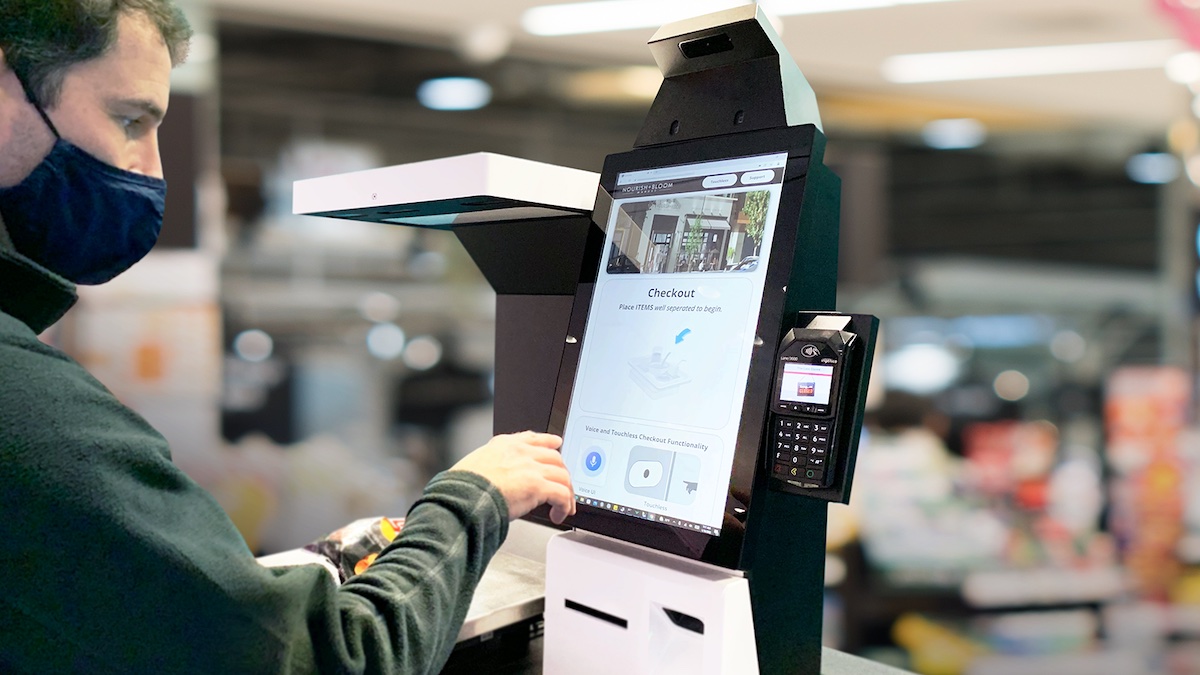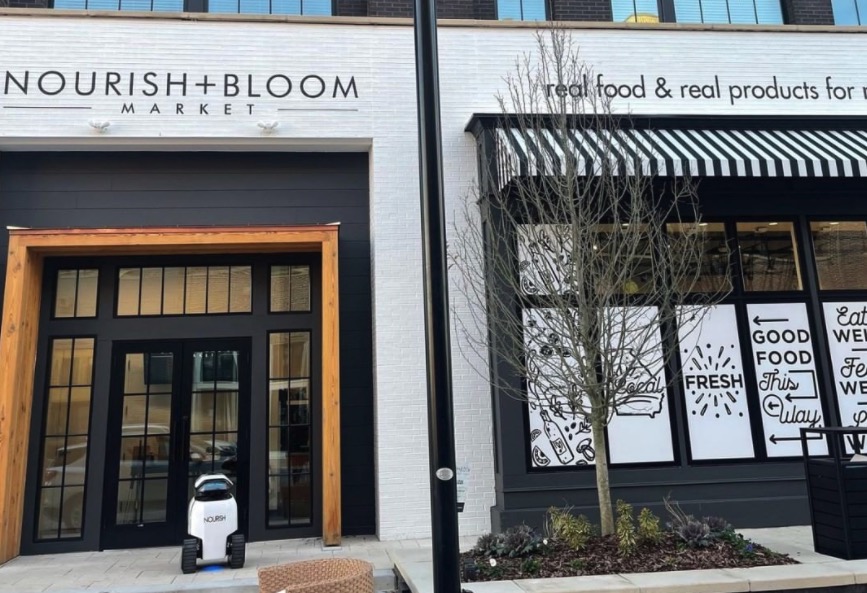
US Grocer Startup Includes Touchless Self-Checkout In Frictionless Experience Mix
March 25, 2022 by Dave Haynes
A U.S. grocery start-up that’s pairing healthy foods with frictionless shopping is including touchless self-checkout screens as part of its technology mix.
Called Nourish + Bloom Market, the Georgia-based company has plans to include self-checkout terminals that use hand-tracking hardware and related software from Ultraleap as part of the shopping experience. The store is billed as the first autonomous grocery store in the US, and the first African American-owned autonomous grocery store in the world.
Ultraleap’s tech, which captures and responds to touchscreen-like actions BEFORE shoppers actually touch the user interface, is being rolled into an end-to-end retail solution called UST Vision Checkout. So if your index finger is planning to boink the Choose Payment Type button on the checkout screen, the technology reads that action and provides feedback before the finger actually contacts the surface.
Says Ultraleap in PR:
UST’s frictionless solution is a self-checkout POS that uses computer vision to identify SKUs. UST has integrated Ultraleap’s hand tracking hardware and award-winning TouchFree application into this solution. Users can purchase products using a fully touchless purchase process and voice technology benefits, leading to a 3X faster checkout experience..
“Nourish and Bloom’s vision of their store was centred around having a touchless experience, and so Ultraleap’s hand tracking technology was integral to UST’s Vision Checkout product. The result is a frictionless store offering the very best experience for customers,” says Subhodip Bandyopadhyay, GM-Emerging Technology for UST, which seems to be (the company’s online descriptions are word salads) a big consulting company focused on “digital transformation solutions.”

“The idea of the store occurred to us during the pandemic,” says Jilea Hemmings, Founder and CEO of Nourish + Bloom Market. “We wanted to provide a solution for customers where they wouldn’t have to wait in line or touch anything while checking out. With UST’s help, we have successfully created a hybrid autonomous technology to offer that solution. We are confident that this technology will change how customers shop in the next three to five years.”
You might reasonably wonder, as I did, why a “frictionless” store built around the idea of shoppers just picking up what they want and walking out (like the Amazon Go experience) would need self-service checkouts.
Here’s what UST says:
“Vision Checkout is part of our overall portfolio of Frictionless Solutions; we know one size does not fit all, hence we are the first to introduce HYBRID Autonomous Store where part of the store is fully autonomous, and part of the store (large assortment) is handled through UST Vision Checkout. The benefit we bring with this technology is the capability to efficiently build a store chain database of vision checkout, which can then be deployed to multiple locations simultaneously.”
“The Vision Checkout solution is, an out-of-the-box platform. The store’s SKU listings are trained using UST Product Box. Edge-tuned AI engines can detect objects with less than three second transaction times. It provides customers a simple, intelligent, and autonomous self-checkout experience utilizing cutting edge technologies including touchless UI on a reliable digital kiosk. By implementing UST Vision Checkout, customers can experience positive ROI from day one.”
Nourish + Bloom has plans to open more than 500 stores across the U.S. and this set-up would be a standard part of the mix. Of course, planning to have 500 stores and getting there are two different things. The first store opened in January, near Atlanta.
We are so excited to share our Nourish + Bloom Market autonomous shopping experience video.
Autonomous shopping provides customers a way to shop without checkout lines.
Visit Nourish + Bloom Markethttps://t.co/NWLCtGz7W6
Please like, share and comment pic.twitter.com/b0OiKICNjJ
— Nourish + Bloom Market (@nourishbloommkt) June 11, 2021
Based on announcements on Ultraleap’s website, this would be among the first real-world deployments of this technology in retail environments. One of the interesting aspects to this news is the complete absence of references to health safety and a focus, instead, on convenience. Two years ago, touchscreens were regarded as dodgy surfaces to avoid, over worries of COVID-19 transmission. With experience and data, the virus is more in the air than on surfaces, and touchscreens are seen as a way to consumer shopper-staff interactions than could lead to virus transmission.
It’s interesting technology, but I’m skeptical about widespread adoption in retail. If it makes shopping faster, better and easier than what’s now commonly used, those are the things that would drive adoption.
I did a podcast last year with Saurabh Gupta of Ultraleap:



Leave a comment